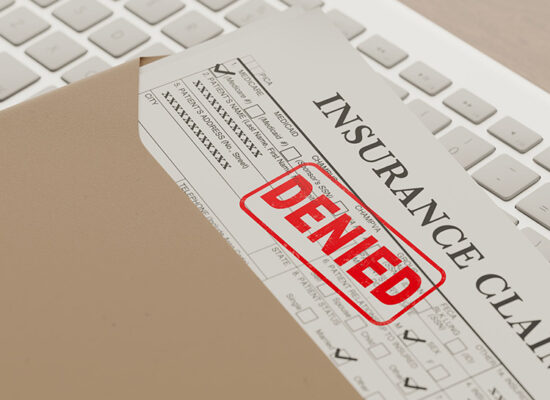What to Do in the First 24 Hours After Hurricane Damage
The hours immediately following a hurricane are critical for your safety and recovery. And, while filing an insurance claim might be the furthest thing from your mind, that first day may also be your best chance to set yourself up to get the compensation you deserve.
When a hurricane hits, take prompt, organized action to protect your property, secure insurance compensation, and begin the rebuilding process. Here are the non-negotiable steps you must take.
Secure your and your family’s safety

Since hurricane damage can make your home and property dangerous, you must stay vigilant about hazardous conditions as you move about your home and move to a safer location. Avoid downed power lines, which can electrify standing water and pose serious risks. Never drive or walk through flooded areas because even shallow water can sweep vehicles away or hide dangerous debris. And do not stay in a home that is severely damaged.
Follow official guidance from emergency services. Continue monitoring local radio, television, or emergency apps for critical updates and evacuation orders. Remember, return to your property only when authorities have declared it safe.
Contact emergency services and utility providers
Immediately report any life-threatening emergencies to 911 immediately. Remember to use phones sparingly to avoid overwhelming emergency systems during this critical time. Next, contact your utility providers about potential hazards. Report gas leaks, downed power lines, or damaged water and sewage lines to the appropriate companies. Never attempt to handle these hazards yourself. If you suspect electrical damage, ask your power company to disconnect service rather than attempting to access your breaker box in potentially unsafe conditions.
Assess and secure your property

Once you secure your and your loved ones’ personal safety, assess your property from a safe distance. Look for structural damage like leaning walls, a shifted or cracked foundation, or collapsed sections. Do not enter if you see significant structural compromise.
In order to secure your insurance claim, you also must document all visible damage with photos and videos before touching anything. Capture wide shots of affected areas and close-ups of specific damage. This documentation will back up your claim when you submit it, showing the extent of the damage caused specifically by the storm.
Another part of assessing your property that will also impact your claim is immediately preventing additional damage. Examples of steps you can take are to cover broken windows with plywood, place tarps over roof damage, and remove valuable items from water-damaged areas. Remember to save receipts for any emergency supplies you use, because these expenses may be reimbursable. Only attempt temporary repairs that don’t put you at risk, and wait for insurer approval before making permanent fixes.
Notify your insurance company
Once you assess your property and protect it against further damage, contact your insurance company. Don’t wait. Most policies require prompt notification, and many have specific timeframes for filing hurricane claims. And, while you could have up to two years to file your claim in Texas, waiting that long can obscure damage and delay your compensation.
When filing your claim, provide thorough documentation. Send all the clear photos and videos you have of the damage, and, when possible, record item values and purchase dates. Keep all receipts for emergency repairs and temporary housing, as these expenses may be reimbursable.
Review your policy carefully to understand your coverage limits, deductibles (which may be different for hurricane damage), and exclusions. Prepare for the adjuster’s visit by organizing your documentation and creating a comprehensive list of damages.
Begin cleanup and salvage efforts safely

Once it’s safe to start cleanup, prioritize your personal protection. Wear heavy gloves, sturdy boots, long sleeves, and eye protection to guard against debris, contaminated water, and potential hazards. Be cautious of dangers like loose plaster, wildlife seeking shelter, and potential electrical hazards from wet appliances.
Carefully sort through your belongings, separating salvageable items from those beyond repair. Document everything with photos before disposal for insurance purposes. Keep detailed records and receipts for any cleanup expenses as these may be reimbursable under your policy.
Dispose of hazardous materials, including chemicals, electronics, and contaminated items, according to local guidelines. Many communities establish special collection points after disasters. Never burn or bury hazardous waste, as this can create additional environmental and health risks.
Move forward after hurricane damage
Recovering from a hurricane is overwhelming, but you don’t have to face it alone. By acting quickly and methodically in the first 24 hours, you’re not only protecting your property; you’re safeguarding your future. Every photo you take, call you make, and step you follow brings you closer to fair compensation and peace of mind.
At Palker Law, we’re here to support you through every step of the claims process. From reviewing your policy to organizing your documentation and communicating with your insurer, our team brings clarity, experience, and peace of mind when you need it most.
Don’t wait for problems to escalate. If your home or business suffered hurricane damage, contact us today for a free consultation. We’ll review your claim, explain your rights, and help you move forward with confidence.






